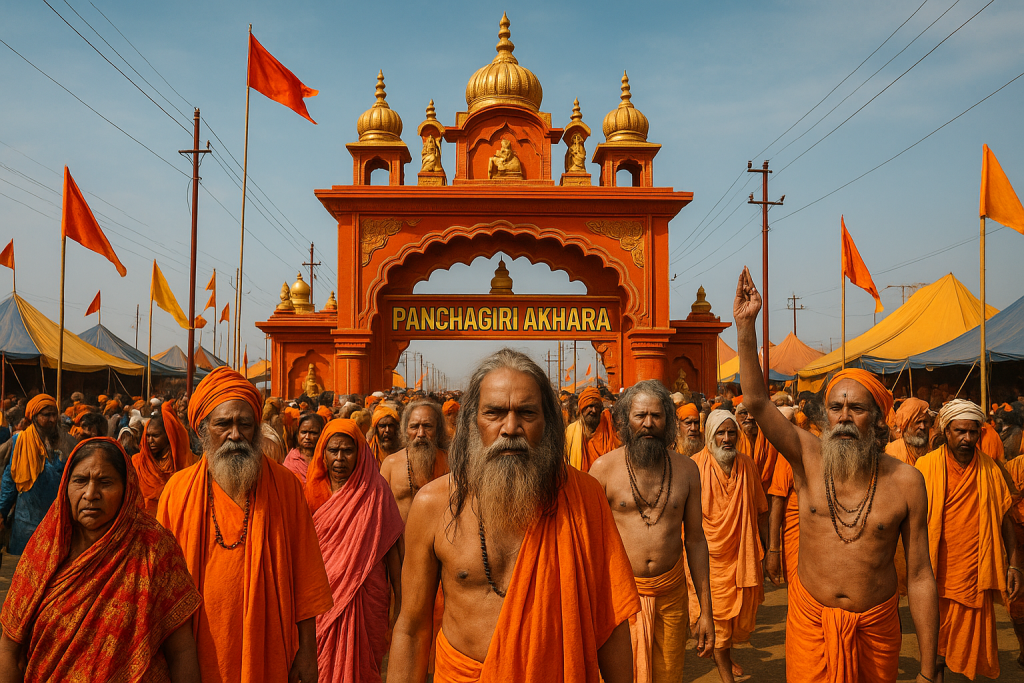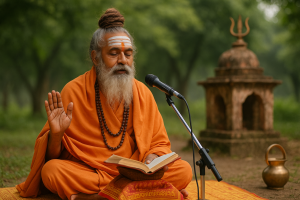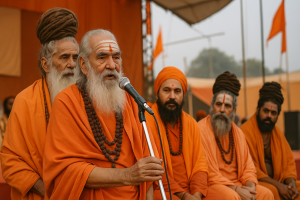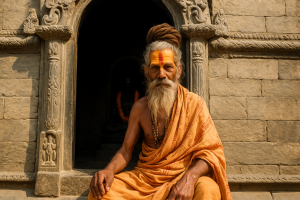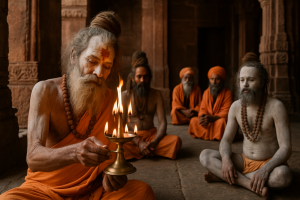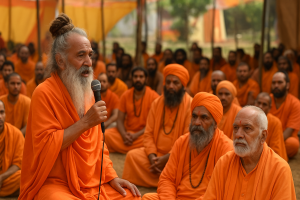Panchagiri Akhara at Kumbh Mela: A Sacred March of Devotion and Discipline
Every few years, millions of pilgrims gather at India’s holiest rivers to witness the grand spiritual event known as the Kumbh Mela—a celebration of faith, renunciation, and the eternal flow of Sanatan Dharma. Among the thirteen traditional akharas, the Panchagiri Akhara holds a distinct and revered place, especially for its strict Brahmacharya (celibate lifestyle) and devotion to Mata Gayatri. Its participation in the Kumbh Mela is not only ceremonial but deeply symbolic—a living testament to its timeless spiritual discipline.
Founded in 1136 CE (Vikram Samvat 1992), Panchagiri Akhara (also known as Panchagni Akhara) is one of the oldest Shaivite Brahmachari akharas. Unlike other akharas, it does not follow dhuni (sacred fire) rituals or practices involving ash and intoxicants. Its sadhus wear the sacred thread (janeu) and remain lifelong celibates. The Akhara’s unique identity is clearly visible during the Kumbh Mela, where their simplicity, order, and spiritual energy stand apart from the crowd.
One of the most anticipated events is the Chavni Pravesh (Akhara Camp Entry), where Panchagiri Akhara enters the Kumbh grounds in a grand, majestic procession. Led by the Acharya Mahamandaleshwar Ram Krishnanand Ji, the saints arrive with solemn grace. The palanquin of Mata Gayatri, the presiding deity of the Akhara, is carried at the front, surrounded by chanting disciples and adorned elephants, horses, and traditional drums. This moment is not just a visual spectacle but a powerful spiritual experience for onlookers.
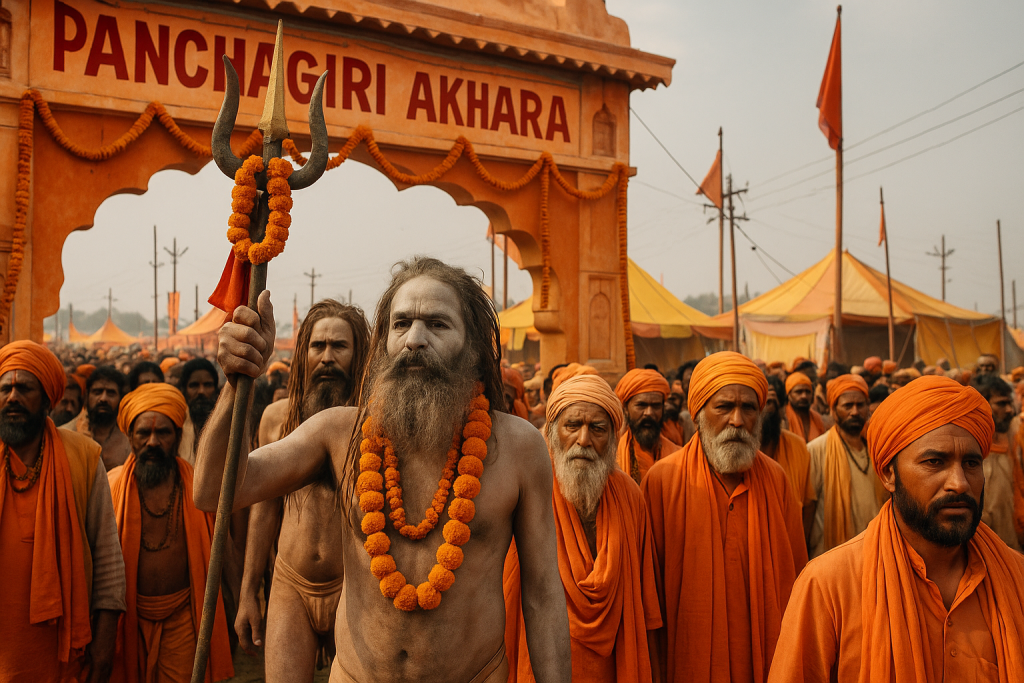
The 2025 Prayagraj Mahakumbh saw one of the most organized and spiritually vibrant processions from Panchagiri Akhara. Hundreds of Brahmachari saints marched in discipline, radiating peace and purpose. Unlike the ash-smeared Naga sadhus of other akharas, Panchagiri saints walk simply, clothed in saffron robes, their foreheads marked with sandalwood tilak, holding sacred texts and rudraksha malas.
Beyond processions, the Akhara’s camp becomes a center of spiritual learning and service during the Mela. Daily Gayatri havans, discourses on Vedic scriptures, and satsangs are conducted for thousands of pilgrims who seek blessings, guidance, and wisdom from the Akhara’s saints. Free food, shelter, and Ayurvedic care are also offered as acts of seva (selfless service).
What makes Panchagiri Akhara’s participation in the Kumbh Mela truly special is its ability to uphold deep spiritual tradition amidst massive crowds and modern distractions. Its saints are not just symbolic figures; they are living embodiments of discipline, knowledge, and dharma, inspiring both devotees and fellow ascetics.
As each Kumbh Mela passes, Panchagiri Akhara continues to carry the light of an ancient lineage into the present moment—a flame of purity, devotion, and unbroken Vedic tradition.

